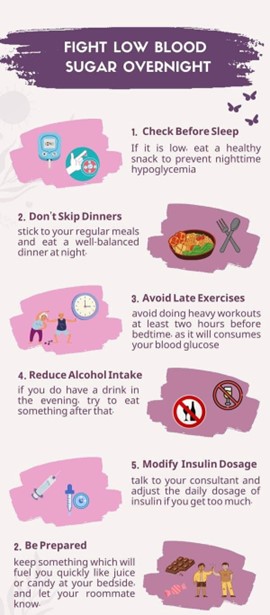An adult female client with type 1 diabetes mellitus is receiving NPH insulin 35 units each morning. Which finding should the practical nurse (PN) document as evidence that the amount of insulin is inadequate?
States her feet are constantly cold along with feeling numb
Consecutive evening serum glucose greater than 260 mg/dL
A wound on the ankle that starts to drain and becomes painful
Reports nausea in the morning but still able to eat breakfast
The Correct Answer is B
The correct answer and explanation is:
b) Consecutive evening serum glucose greater than 260 mg/dL.
This is the finding that the PN should document as evidence that the amount of insulin is inadequate for the client with type 1 diabetes mellitus. Consecutive evening serum glucose greater than 260 mg/dL indicates hyperglycemia, which means that the client's blood sugar is too high and not well controlled by the insulin dose.
The PN should report this finding to the healthcare provider and expect a possible adjustment in the insulin regimen.
a) States her feet are constantly cold along with feeling numb.
This is not the finding that the PN should document as evidence that the amount of insulin is inadequate for the client with type 1 diabetes mellitus.
States her feet are constantly cold along with feeling numb may indicate peripheral neuropathy, which is a complication of diabetes that affects the nerves in the feet and legs. It is caused by chronic high blood sugar levels over time, not by a single dose of insulin.
c) A wound on the ankle that starts to drain and becomes painful.
This is not the finding that the PN should document as evidence that the amount of insulin is inadequate for the client with type 1 diabetes mellitus. A wound on the ankle that starts to drain and becomes painful may indicate an infection, which is a risk factor for diabetic clients due to impaired wound healing and immune function. It is not directly related to the insulin dose, although it may affect the blood sugar levels and require more insulin.
d) Reports nausea in the morning but still able to eat breakfast.
This is not the finding that the PN should document as evidence that the amount of insulin is inadequate for the client with type 1 diabetes mellitus. Reports nausea in the morning but still able to eat breakfast may indicate morning sickness, which is a common symptom of pregnancy. It is not related to the insulin dose, although it may affect the blood sugar levels and require more frequent monitoring and adjustment.

Nursing Test Bank
Naxlex Comprehensive Predictor Exams
Related Questions
Correct Answer is A
Explanation
Choice A rationale:
Keeping the head of the bed raised 45 degrees is a crucial intervention in septic shock. This position helps improve oxygenation and reduces the risk of aspiration. It promotes better lung function and can help maintain a higher mean arterial pressure, which is important in the management of sepsis.
Choice B rationale:
Maintaining strict intake and output is important for assessing fluid balance, but it is not the most critical intervention when a client is in septic shock. Hemodynamic stability and oxygenation take precedence in this situation.
Choice C rationale:
Monitoring blood glucose levels is an essential aspect of care, especially in critically ill patients. However, it is not the most important intervention in the immediate management of septic shock.
Choice D rationale:
Assessing the warmth of extremities is important for circulatory assessment, but it is not the most crucial intervention in septic shock. Hemodynamic support and maintaining oxygenation are higher priorities.
Correct Answer is ["A","B","D"]
Explanation
Choice A rationale:
An elevated serum creatinine level can indicate kidney dysfunction or damage, which can be a possible adverse effect of amoxicillin-clavulanate. The kidneys are responsible for excreting the medication, and elevated creatinine levels suggest impaired renal function.
Choice B rationale:
An elevated serum alanine aminotransferase (ALT) level is indicative of liver dysfunction or damage. Amoxicillin-clavulanate can sometimes cause hepatotoxicity as a side effect, and elevated ALT levels may suggest this adverse effect.
Choice D rationale:
An elevated white blood cell count (leukocytosis) can be a possible adverse effect of amoxicillin-clavulanate, indicating an increase in the body's immune response. This could be due to an allergic reaction or other adverse reactions to the medication.
Choice C rationale:
An elevated serum potassium level is not typically associated with amoxicillin-clavulanate use. This finding is more likely related to other factors such as kidney dysfunction or certain medications like potassium-sparing diuretics.
Choice E rationale:
An elevated platelet count is not typically associated with amoxicillin-clavulanate use. This finding is more likely related to other factors, such as a bone marrow disorder or inflammation.
Whether you are a student looking to ace your exams or a practicing nurse seeking to enhance your expertise , our nursing education contents will empower you with the confidence and competence to make a difference in the lives of patients and become a respected leader in the healthcare field.
Visit Naxlex, invest in your future and unlock endless possibilities with our unparalleled nursing education contents today
Report Wrong Answer on the Current Question
Do you disagree with the answer? If yes, what is your expected answer? Explain.
Kindly be descriptive with the issue you are facing.
